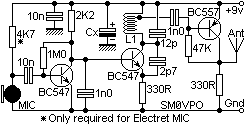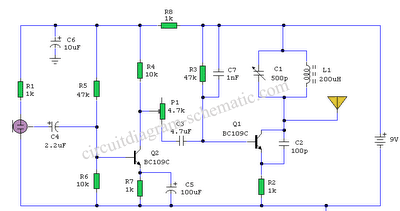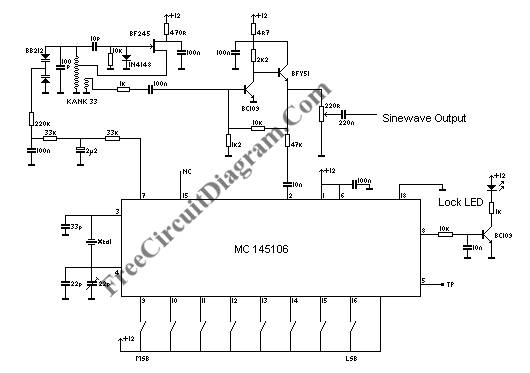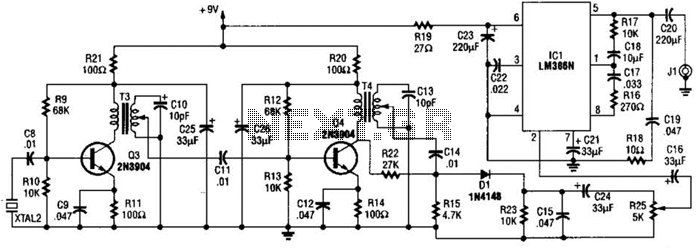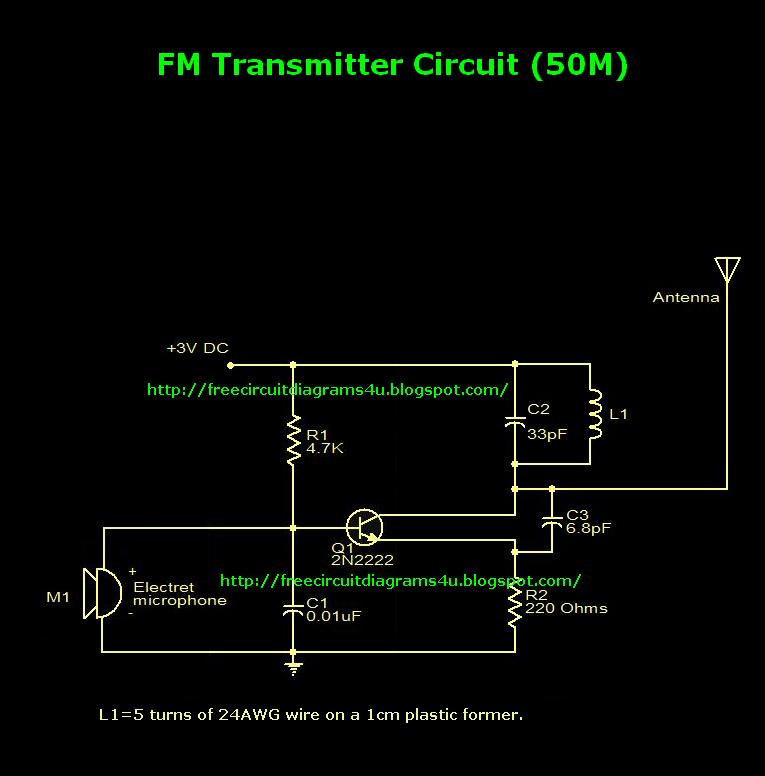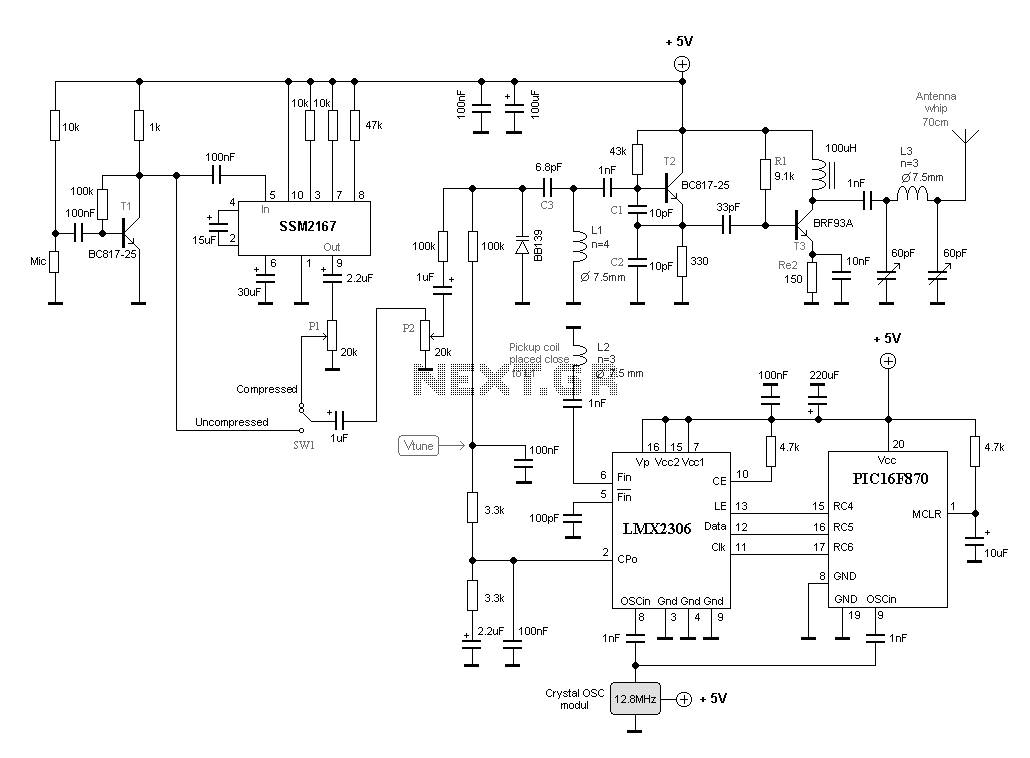
500mw pll fm transmitter 88 108mhz
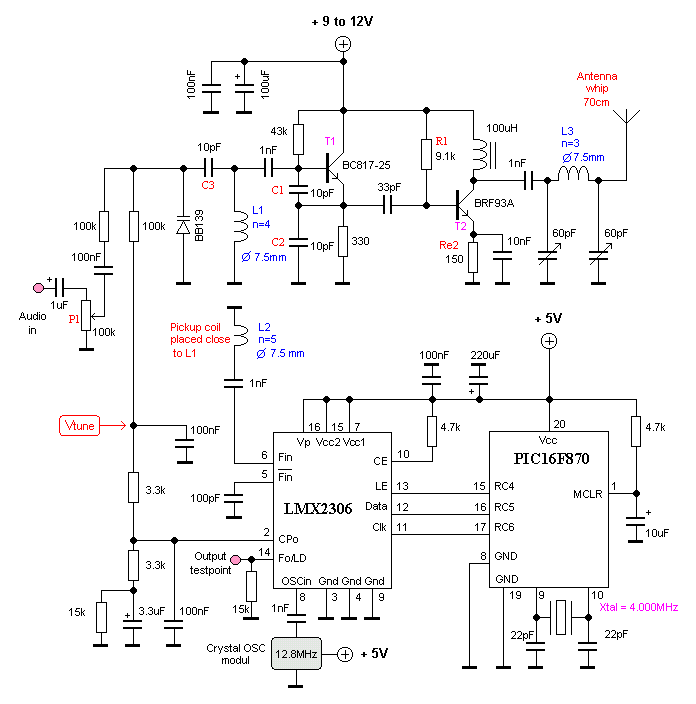
This PLL transmitter is digitally programmable, ensuring stable frequency operation. It operates within the 88-108 MHz range with an output power of up to 500 mW. With minor modifications, the frequency can be adjusted to 50-150 MHz, and the output power can be increased to several watts using transistors. The design aims to create a simple transmitter with excellent performance. The frequency can be easily altered through software adjustments and a space/compressed air coil. The transmitter utilizes a Colpitts oscillator, functioning as a voltage-controlled oscillator (VCO), which is regulated by a PLL circuit and a PIC microcontroller. This configuration allows for frequency modulation (FM) and precise PLL control.
The PLL (Phase-Locked Loop) transmitter is designed to provide a reliable and adjustable RF signal. The core of the system is the Colpitts oscillator, which is favored for its stability and simplicity in generating high-frequency signals. The oscillator's output frequency can be finely tuned using a combination of software commands and physical adjustments to the coil, which can be made from a compressed air setup to optimize performance.
The PLL circuit plays a critical role in maintaining the oscillator's frequency by comparing the output frequency to a reference frequency and making necessary adjustments. This feedback mechanism ensures that the output remains stable even in varying environmental conditions. The integration of a PIC microcontroller allows for digital programming of the frequency, enabling users to easily change the operational parameters without requiring extensive hardware modifications.
With an output power capability of up to 500 mW, the transmitter is suitable for various applications, including FM broadcasting within the designated frequency range. For applications requiring higher power, the use of transistors can elevate the output to several watts, providing greater range and signal strength. The versatility of this PLL transmitter makes it an excellent choice for hobbyists and professionals alike, facilitating experimentation and development within the radio frequency domain.
Overall, this PLL transmitter design merges modern digital control with classic analog techniques, resulting in a robust and flexible platform for frequency modulation and transmission.This PLL transmitter is controlled and the frequency is very stable and can be programmed digitally. Transmitter will work 88-108 MHz and output power up to 500mW. With a small change can set the frequency of 50-150 MHz. The output power is often set to several watts with transistors. So therefore I decided to build a simple transmitter with great performances. The frequency of this transmitter can easily be changed by software and space / compress air coil. This transmitter is the oscillator colpitts. Oscillator is a VCO (voltage controlled oscillator) which is set by the PLL circuit and PIC micro controller. This oscillator is called the Colpitts oscillator and voltage controlled to achieve the FM (frequency modulation) and PLL control.
🔗 External reference
The PLL (Phase-Locked Loop) transmitter is designed to provide a reliable and adjustable RF signal. The core of the system is the Colpitts oscillator, which is favored for its stability and simplicity in generating high-frequency signals. The oscillator's output frequency can be finely tuned using a combination of software commands and physical adjustments to the coil, which can be made from a compressed air setup to optimize performance.
The PLL circuit plays a critical role in maintaining the oscillator's frequency by comparing the output frequency to a reference frequency and making necessary adjustments. This feedback mechanism ensures that the output remains stable even in varying environmental conditions. The integration of a PIC microcontroller allows for digital programming of the frequency, enabling users to easily change the operational parameters without requiring extensive hardware modifications.
With an output power capability of up to 500 mW, the transmitter is suitable for various applications, including FM broadcasting within the designated frequency range. For applications requiring higher power, the use of transistors can elevate the output to several watts, providing greater range and signal strength. The versatility of this PLL transmitter makes it an excellent choice for hobbyists and professionals alike, facilitating experimentation and development within the radio frequency domain.
Overall, this PLL transmitter design merges modern digital control with classic analog techniques, resulting in a robust and flexible platform for frequency modulation and transmission.This PLL transmitter is controlled and the frequency is very stable and can be programmed digitally. Transmitter will work 88-108 MHz and output power up to 500mW. With a small change can set the frequency of 50-150 MHz. The output power is often set to several watts with transistors. So therefore I decided to build a simple transmitter with great performances. The frequency of this transmitter can easily be changed by software and space / compress air coil. This transmitter is the oscillator colpitts. Oscillator is a VCO (voltage controlled oscillator) which is set by the PLL circuit and PIC micro controller. This oscillator is called the Colpitts oscillator and voltage controlled to achieve the FM (frequency modulation) and PLL control.
🔗 External reference
